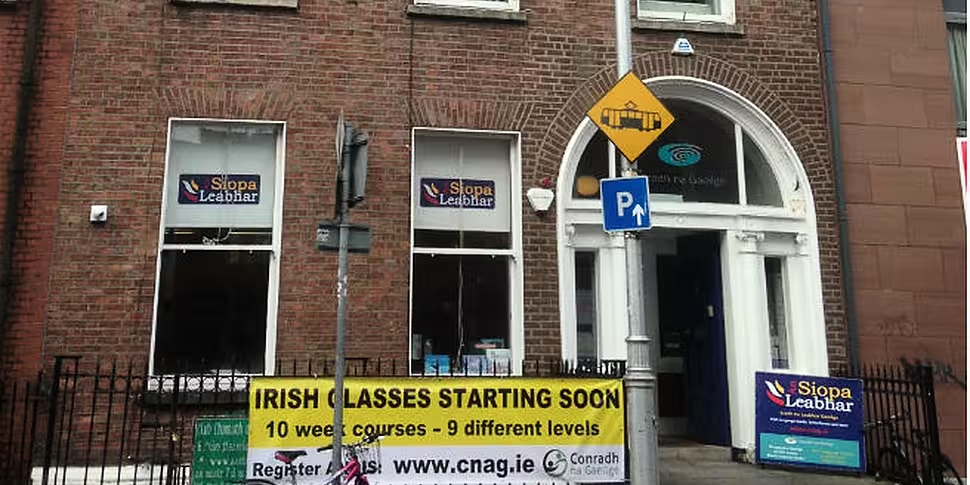For the tens of thousands who walk down or glide through it on the Luas each day, Harcourt Street is one of the most familiar streets in the capital. Many of us have fond memories of peaceful afternoons passing by its elegant houses on the way to the Iveagh Gardens for lunch, or of wild nights out that ended in one of its famous (or infamous) clubs.
We feel we know it, and yet few of us realise the central role that one of its houses, Uimhir 6, has played in our nation’s history. Still fewer of us realise the extraordinary number of cardinals, students, revolutionaries, politicans, bankers, and Irish language activists who have passed through its doors, windows, escape hatches, and secret tunnels, even on occasion in handcuffs after military raids!
First placed on the market it 1798, the building was leased to Cardinal John Henry Newman in the middle of the 19th Century. He lived there for a period, and when University College Dublin (then The Catholic University of Ireland) first opened its doors under his supervision on November 3, 1854, Uimhir 6 was one of the three houses used. It was bought by the Sinn Féin Bank for £575 in 1910, and Sinn Féin’s Headquarters remained there throughout the next turbulent decade. Arthur Griffith had his offices on the second floor, and An tÓglach, the magazine of the Irish Volunteers, was produced from the building.
 Black & Tans arrive at 6 Harcourt St in 1922
Black & Tans arrive at 6 Harcourt St in 1922
6 Harcourt Street was used to organise Sinn Féin’s landslide victory in the 1918 General Election, which led to the setting up of the First Dáil and to independence, and when the First Dáil appointed Michael Collins as Minister for Finance in 1919, it was here that he set up his offices. As the War of Independence intensified, Collins’ work was frequently interrupted by British Army and Police raids. Despite their best efforts, he evaded capture by use of an escape hatch in the roof (the ladder remains in place) and on other occasions through a series of tunnels rumoured to still exist under the building!
Today, as the headquarters of Conradh na Gaeilge, the democratic forum of Irish speakers worldwide, Uimhir 6 continues to play a prominent role in national life, as the centre for campaigns, social events, and classes in the Irish language. On September 19, Dubliners will have a rare opportunity to visit the historic building, when Uimhir 6 opens its doors for Culture Night 2014. All of the organisations currently based there, including Club Chonradh na Gaeilge, Seachtain na Gaeilge, An Siopa Leabhair, and Oireachtas na Gaeilge will be hosting events in Irish and in English, and guests will be invited to experience guided tours of Uimhir 6 as well as to view some of the unique historical documents preserved in the building.
Visit Conradh na Gaeilge’s website now for more infromation at or email them at eolas@cnag.ie.









